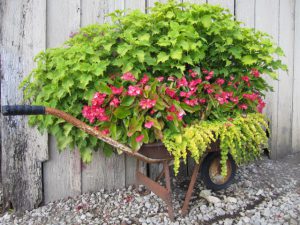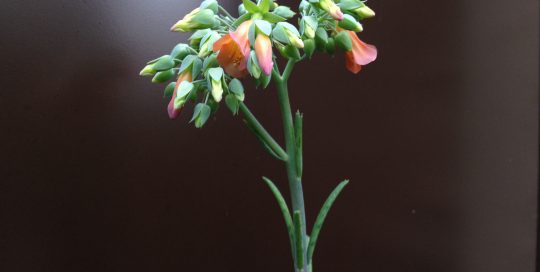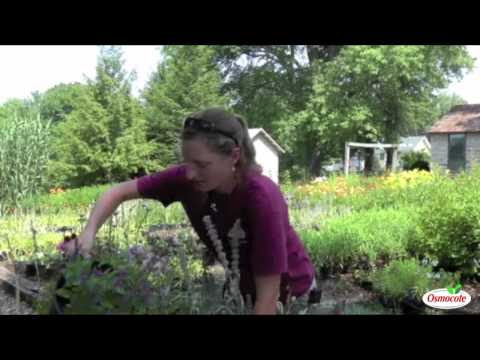How to Design Annual Flower Containers
Views: 6781

It’s annual flower season and time to brighten up porches, patios, decks, and windowsills with containers filled with colorful annual flowers.
There are several factors to consider when creating annual container plantings. Having some idea of what you’re looking for before you go shopping will make the decision process much simpler and help you avoid that overwhelmed feeling when presented with rack after rack of enticing annual flowers.
That being said (and because I can’t resist trying new plants), I still make far too many impulse buys at the nursery and often end up with a crazy assortment of colors and textures in my annual containers. But hey, what’s life without a little adventure?
Designing Annual Flower Containers for Effect
Consider first what kind of effect you’re going for. Combining white flowers with any other singe color creates a classic or formal look. Vibrant, hot combinations consist of reds, oranges, and yellows. Create a calm, cool feeling by using purples and blues alone or in combination with white flowers or silver foliage. Sticking with one flower color is always a safe bet, as is pairing colors opposite each other on the color wheel (red/green, purple/yellow, blue/orange).
You can achieve similar effects by considering the growth habits of annuals. Plants with a tidy habit and balanced form look more formal, while those with stems that sprawl and reach create a more natural effect, like in a cottage garden.
Spill, Fill, and Thrill
The tried and true rule of mixed containers is to include at least one each of a plant that will spill, fill, and thrill.
The spiller weeps over the edge of the container, the filler looks good all the time, and the thriller is a dramatic, eye-catching element. This is basically the same as the height rule for containers, which includes a low plant that softens the edge of the container, a medium-height plant, and a tall central element.
Pay Attention to Light
You should also consider what kind of light you have available. Most annuals come with tags stating what amount of daily direct sunlight they require. Full sun means the plant requires 6 hours or more of direct sunlight each day to perform well. Part sun plants need 3 to 6 hours of sun (same for part shade). Shade plants will perform with 3 or less hours of direct sun or dappled shade.
Both part sun and shade plants need protection from the hot afternoon sun, so a location that receives morning sunlight only or dappled light in the afternoon is best. Observing the light around your house for a day will help you determine ideal locations for containers and what kind of annuals to plant in them.
Check Water Requirements
Water requirements are also important. Fortunately, most annuals are pretty well-suited to be neighbors in a container, but that doesn’t mean all of them are.
Keep an eye on the plant tags to make sure their water needs are compatible. Some varieties are very drought tolerant and won’t thrive if consistently too wet, while others can handle or prefer consistently damp soil. Basically, don’t pair a cactus with papyrus.
How Much Will Annual Flowers Grow?
Lastly, consider the mature height and width of the plants and make sure to plant them in a container big enough to suit their size. Many annuals can grow several feet in one season, so once again, pay attention to the plant tag to make sure you don’t put a large plant in a too-little pot.
However, for container plantings, don’t pay attention to the spacing requirements on the tag and, unless it already is or will be a large plant, buy enough to pretty much fill the container. That way you don’t have to wait on things to grow and fill in, because after all, summer will fly by and we might as well enjoy the flowers while we can.
Meet Abbi Hayes
Abbi's Recent Posts

Kalanchoe delagoensis: Mother of Millions







